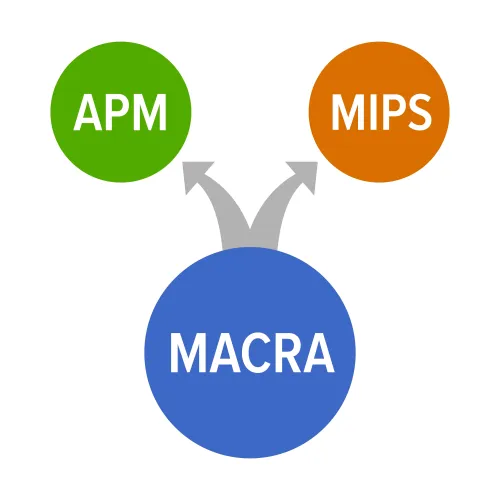ED Coding and Reimbursement Alert
Can You Answer These Diagnosis Coding FAQs?

Hint: Heed sequencing when necessary.
ED providers see such a wide variety of diagnoses that it’s nearly impossible for emergency department coders to memorize all of the ICD-10 codes that will be reported in any given week. Therefore, your ability to scour the diagnosis coding manual and understand the ICD-10 code assignment rules is imperative.
Take a look at three recent questions submitted to ED Coding Alert and determine whether you can answer them before you read the solutions.
GI Issues, Anxiety
Question 1: A 54-year-old woman presents complaining of difficulty sleeping, nervousness, gastrointestinal (GI) problems, rapid breathing, mild depression, and heart palpitations. The ED provider administers a Patient Health Questionnaire for Depression and Anxiety (PHQ-9) and a Generalized Anxiety Disorder Test (GAD-7) to determine the patient’s condition. After scoring the test, the provider documented a diagnosis of anxiety with depression. Which ICD-10-CM codes are appropriate for this encounter?
Answer 1: You know that per ICD-10 guidelines B.6, “signs and symptoms that may not be associated routinely with a disease process should be coded when present.” Consequently, in this case, since the provider has made a definitive determination of what the patient’s problem is, code only the diagnosis and not the symptoms.
The most difficult part of this case study is assigning the specific diagnosis code for anxiety with depression. If the depression is mild or not persistent, report F41.8 (Other specified anxiety disorders). The code includes mixed anxiety and depressive disorder, as it lists two similar-sounding synonyms: “Mixed anxiety and depressive disorder” and “Anxiety depression (mild or not persistent).”
However, if the provider documents that the patient has a major depressive disorder, then you would look at F32.- (Major depressive disorder, single episode). Only code this if there has been no previous major depressive episode, and list the anxiety separately under F41.- (Other anxiety disorders), excluding F41.8 as the depression is not determined to be mild. If the patient has a major depressive disorder that’s recurrent, you should look to F33.- (Major depressive disorder, recurrent).
Don’t miss: Since one of the symptoms is GI problems, the provider may well perform additional lab tests to rule out a physical problem. You could also report that diagnosis, assuming a physical problem was found, and link it to any lab or diagnostic tests performed.
In that case, you would report the appropriate ICD-10 code for the identified GI problem or K92.9 (Disease of digestive system, unspecified) if a more specific diagnosis was not available, depending on the results of any tests your provider ordered. But you would not report any of the other signs and symptoms reported in your provider’s notes, as they are all common to the diagnosis of anxiety with depression.
Shoulder Pain From Tendinitis
Question 2: During the course of an E/M service for a patient complaining of shoulder pain, the provider diagnoses tendinitis. Should you submit an ICD-10 code for shoulder pain, tendinitis, or both?
Answer 2: Once the provider confirms a diagnosis, you don’t need to submit another ICD-10 code for the presenting problem (pain). So, you’ll append a tendinitis code to your E/M service code (99281-99285).
You will, however, need to discover which type of tendinitis the patient was suffering from. There are two types of shoulder tendinitis. Check out these definitions and ICD-10 codes for each type:
Bicipital tendinitis: If the provider indicates bicipital shoulder tendinitis, you’ll choose from the following ICD-10 codes:
- M75.20 — Bicipital tendinitis, unspecified shoulder
- M75.21 — Bicipital tendinitis, right shoulder
- M75.22 — Bicipital tendinitis, left shoulder.
The condition often occurs with other shoulder issues — most frequently damage to the rotator cuff. Other problems that often accompany bicipital tendinitis can include:
- Shoulder joint arthritis;
- Glenoid labrum tear;
- Chronic shoulder instability;
- Shoulder impingement; and
- Other diseases that cause inflame the shoulder joint lining.
Calcific tendinitis: If the provider indicates calcific shoulder tendinitis, you’ll choose from the following ICD-10 codes:
- M75.30 — Calcific tendinitis of unspecified shoulder
- M75.31 — Calcific tendinitis of right shoulder
- M75.32 — Calcific tendinitis of left shoulder.
The tissue around the calcium deposits can become inflamed and cause shoulder pain; people over 40 are most often affected by calcific tendinitis.
Best bet: Scour the notes for any indication as to whether this is bicipital or calcific tendinitis. Since symptoms for these conditions often overlap, you might have to check with the performing provider for a definitive answer.
Ear Infection And Flu
Question 3: A computed tomography (CT) scan is performed on a patient with a chronic middle ear infection. The documentation also notes a positive influenza test result. The provider does not state whether or not the conditions are related. Should you report these two conditions separately, or is your best bet a combination code?
Answer 3: Despite the fact that the physician doesn’t definitively connect these conditions, you will want to refer to the ICD-10-CM manual to determine your course of action. However, in order to code this properly, you must have a grasp on how to code an ear infection. Infection ⇒ ear (middle) leads you to “see also otitis media.” But, before you report an otitis media code, you’ll want to look up the patient’s influenza diagnosis first to determine whether a combination code exists.
In the ICD-10-CM index, Influenza (bronchial) (epidemic) (respiratory (upper)) (unidentified influenza virus) ⇒ otitis media leads you to code J11.83 (Influenza due to unidentified influenza virus with otitis media). As you can see via the index, you do not need to determine a cause and effect relationship in order to report code J11.83. When the index uses the term “with,” the accompanying condition only needs to be included as a diagnosis alongside the primary condition.
The same applies for other respiratory manifestations. If, for instance, the provider documents pharyngitis in addition to the influenza diagnosis, but does not state that the pharyngitis is a manifestation of the influenza, you will still report code J11.1 (Influenza due to unidentified influenza virus with other respiratory manifestations). That’s because Influenza ⇒ with pharyngitis leads you to code J11.1. Despite the fact the code description for J11.1 indicates the pharyngitis is a manifestation, you don’t need to prove as much in order to reach the code via the ICD-10-CM index.
Related Articles
ED Coding and Reimbursement Alert
- Compliance:
3 Recent Cases Reveal ED Fraud Vulnerabilities
Scrutinize your compliance program to avoid such issues. As healthcare auditors increasingly add new issues [...] - ICD-10:
Can You Answer These Diagnosis Coding FAQs?
Hint: Heed sequencing when necessary. ED providers see such a wide variety of diagnoses that [...] - FBR Coding:
Subcutaneous Foreign Body Removals? Check for Incision
Don’t sacrifice pay for these common problems. Emergency department providers don’t often perform surgeries, but [...] - You Be the Coder:
Find out Whether Moderate Sedation is Billable in ED
Question: In the emergency room setting, can the ED provider perform an intubation and also [...] - Reader Question:
CMS: New MBI Numbers Should Now Be the Norm
Question: How long do we have before we need to start reporting Medicare claims with [...] - Reader Question:
Understand the Toe Laceration Codes
Question: We saw a patient who presented with lacerations of the great toe without nail [...] - Reader Question:
Can You Separately Report Heat, Ice Treatment?
Question: A patient came into the ED with an injured arm, and the provider gave [...] - Reader Question:
Nail Down Limb Pain Dx
Question: A patient reported to the ED complaining of pain in his entire left leg; [...] - Reader Question:
Pinpoint Rules for Double ED Visits
Question: We saw a patient in the morning for a bloody nose and then he [...] - Reader Question:
Get to Know Nose, Throat Anatomy
Question: Our ED physician’s procedure notes indicates that he inserted a scope through the nose [...] - Reader Question:
Which Diagnosis Applies in Observation Care?
Question: Our understanding is that the first-listed diagnosis must be used in lieu of the [...]




